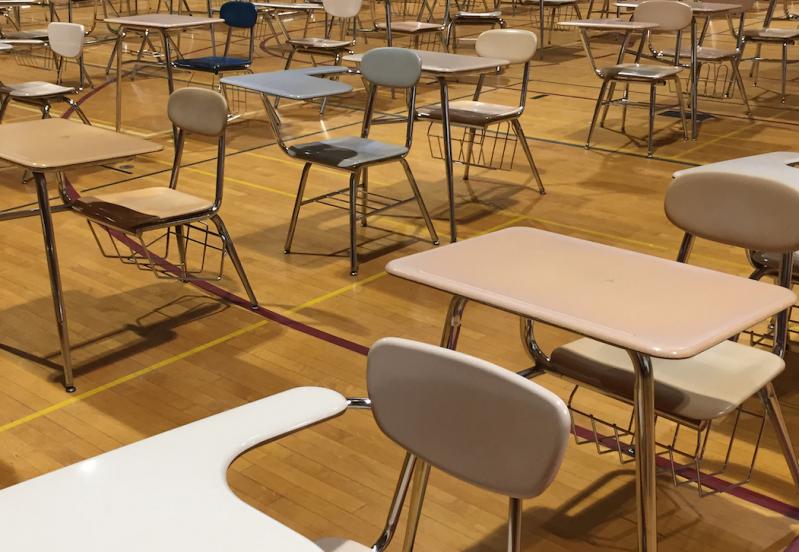America’s 9-year-olds “are performing at a level last seen two decades ago,” said Daniel McGrath, the acting associate commissioner of the National Center for Education Statistics, a branch of the United States Education Department. His announcement addressed a recent federal study that exposed the devastating effects of Covid-19 on the nation’s schoolchildren. Mr. McGrath said the results were, “the largest declines we have observed in a single assessment cycle in 50 years.”
Specifically, the study showed that in math, the average score for 9-year-old students fell 7 percentage points between 2020 and 2022, while the average reading score fell 5 points.
During last Tuesday’s school board meeting in East Hampton, the first of the academic year, the heads of each of the three schools expressed only optimism and focused on the return to a much-welcome level of normalcy.
“We’re now really able to return to excellence, and everybody kind of has the bandwidth to really focus on academic achievements. And we really feel like we’re hitting the ground running with that,” said Sara Smith, the high school principal.
Her sentiments were echoed by Charles Soriano, the middle school principal: “It does feel like we are back very normally.”
Prior to the school board meeting, Adam Fine, the district superintendent offered this, when asked about the federal study and the pandemic’s impact on learning: “I believe we anticipated learning deficiencies and social-emotional deficits due to the pandemic. We noticed signs of this last year through student behavior and observed academic struggles,” he wrote in an email to The Star. “East Hampton has a very supportive infrastructure to support student learning and well-being. Our schools have small classes and many support personnel to help students who struggle academically. Our summer school not only addressed the struggles of high school students but we also had programs for our elementary students and middle school students. I do believe we will be seeing these struggles for the next five years at a minimum.”
In fact, summer learning and after-school catch-up programs emerged as the top strategies for helping students recover academically from the pandemic’s impacts, according to FutureEd, an independent think tank at Georgetown University.
Elementary and Secondary School Emergency Relief, or ESSER, provided nearly $200 billion to public schools to spend on Covid-19-related needs, an unprecedented federal investment in American schools, as part of President Biden’s American Rescue Plan Act of 2021. Of that sum, $22 billion is dedicated specifically to addressing learning loss using “evidence-based interventions” focused on the “disproportionate impact of Covid-19 on underrepresented student subgroups.”
As with most pandemic-related issues, these educational setbacks were evidenced more starkly among students of color and those from low-income households, further perpetuating the already-existing inequities that face minority students. Math scores among the nation’s white 9-year-olds dropped by 5 percentage points, compared to a 13-point decline for Black students and 8 points for Hispanic students in the same age group.
In Springs, Debra Winter, the school superintendent said, “We are still reviewing data. The district is using ESSER funds for before-school help and for reading and math support.”
Diana Kolhoff of Sag Harbor is a math education consultant who works with districts in New York and Los Angeles, helping teachers and administrators on curriculum, instruction, and assessment. “Everywhere that I have been working has seen similar results. I think the pandemic has really shown a discrepancy . . . there’s definitely a socioeconomic component because some students didn’t have access to computers or reliable internet. Some students didn’t have support from an adult at home because parents had to work,” she said. “But even students who came from more advantaged households, just being isolated for some kids was often traumatic, and even if they had all the support, they still didn’t thrive. So, it wasn’t 100 percent a socioeconomic component, but that was definitely one of the factors,” she said.
Ms. Kolhoff’s long-term outlook aligned with that of Mr. Fine, the school superintendent in East Hampton. “It will take years to get kids back to where they were,” she said. “It’s not going to be one or two years. We’re in this for the long haul. And for that reason, I think now is an opportune time to reconsider our practices on when and how we accelerate students. I’ve seen students who were in middle school during the pandemic and skipped middle school content, and then being accelerated into an advanced math courses in high school. And they’ve just missed so much of that critical foundation that now they’re almost set up for years and years of unnecessary struggle. So, I think we need to be thoughtful about placement of kids and courses and what our pathways look like post-pandemic.”

